Beebom Score
2025 has been the year of some questionable smartphones. However, none of them puzzled me as much as the Nothing Phone (3), the company’s first “true flagship” phone with a price tag of $899 going toe to toe with the Galaxy S25 and the iPhone 16. Bold, yes. Wise? Maybe not. After using the Phone (3) for the last weeks weeks through Delhi monsoons, shifting apartments, and a trip to the Gateway of Northeast India, let me share my experience in this Nothing Phone (3) review.
Nothing Phone (3) Box Contents
Before I dive headfirst into my thoughts, let us quickly take a look at what you get inside the box of the Nothing Phone (3):
- Nothing Phone (3)
- USB Type-C to Type-C cable
- SIM Ejector tool
- Paperwork
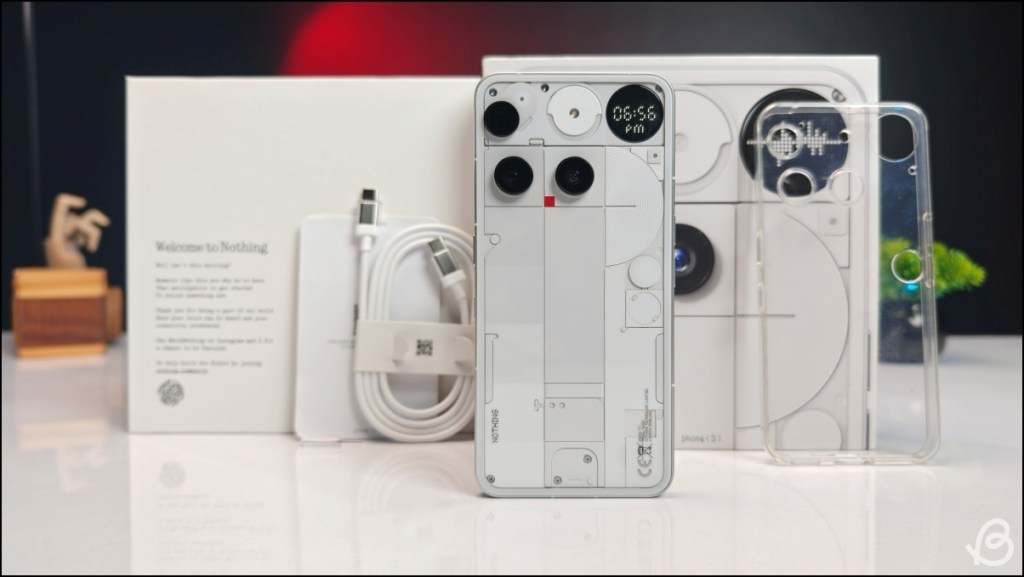
Nothing Phone (3) Design: Familiar But Flawed
At first, the Phone (3) looks like Nothing doing what it does best. Sporting a transparent back panel featuring a technopunk aesthetic, like we have seen previously. But unlike before, they haven’t stuck the landing this time.
The phone has a flat design with a chamfered metal frame going around the sides. It weighs 218 grams, which makes it feel dense and sturdy in the hands. My Beebom buddies really enjoyed the in-hand feel of the device; it gives that premium vibe that you can expect from other smartphones in the same price bracket. The back glass panel at the back is protected by Gorilla Glass Victus, further cementing the feeling of using a high-end device.
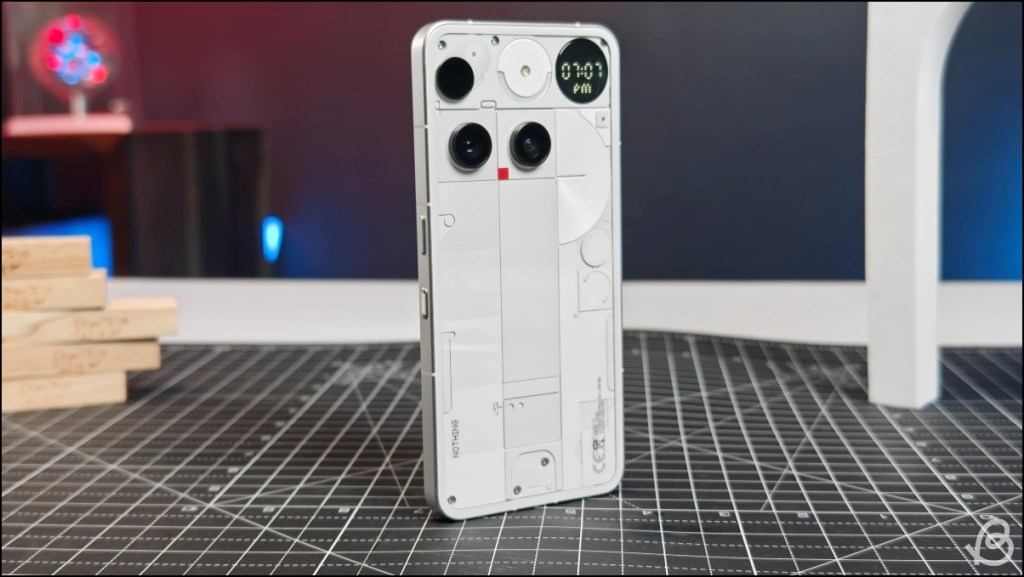
Another good aspect that I loved as I was moving to a new place is that the Phone (3) features an IP68 rating that came in handy as the device got drenched in the Delhi monsoon weather.
But then you flip it over, and things get interesting. See, Nothing has always taken an abstract route with their phone’s design, which takes time to grow on you. However, that wasn’t the case this time. The rear panel looks like a tic-tac-toe grid with only circles. There’s no visual symmetry here; the top camera lens feels misplaced, like it’s dangling off the edge, triggering my ADHD.
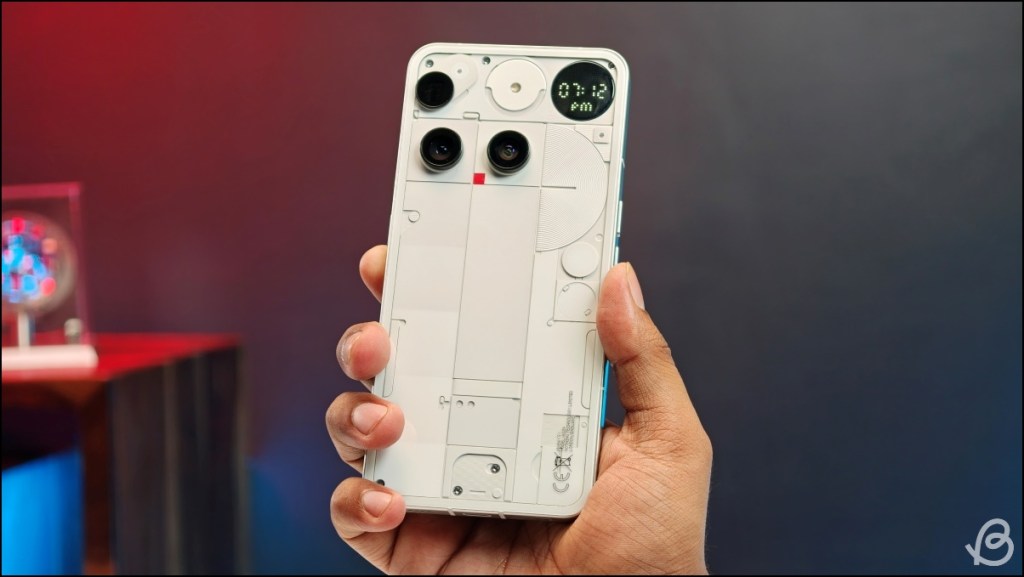
Throughout my time with the Nothing Phone (3), I wasn’t able to get used to this design. There’s something or the other that irks me about it, but hey, maybe you might like it more than I. What I am sure you wouldn’t like is the omission of the glyph lights. Nothing’s iconic LED strips that complemented their odd design are gone; replaced with the new Glyph Matrix.
Nothing Phone (3) Glyph Matrix: A Gimmick Without a Cause
Let’s talk about the elephant, or rather, the matrix in the room. The Glyph Matrix is the circular display on the top corner of the phone, featuring a grid of 489 tiny LEDs. It shows notifications, battery percentage, acts as a visual stopwatch, and can even be used as a selfie display. It sounds already more useful than the Glyph Lights.
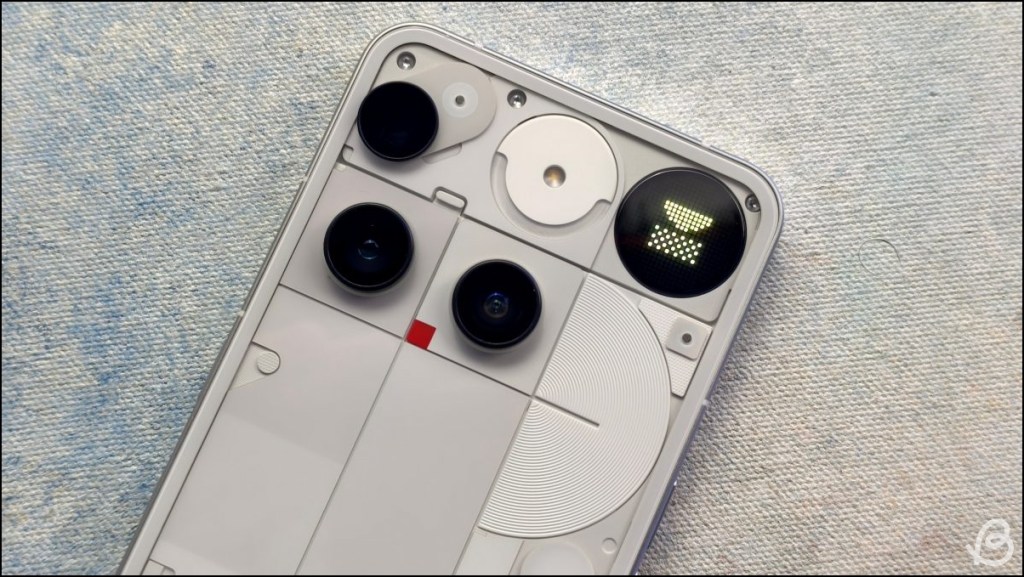
Heck, Nothing has also added some party tricks called Glyph Toys, like spin the bottle, rock-paper-scissors, and Magic 8 Ball, which you cycle through a capacitive button at the back to make your interactions more fun. These oddball additions sound enticing on paper, but in my daily usage, I didn’t find much use for them. Not once did I find the need to pull out the spin the bottle, and the novelty wore off pretty early.
I didn’t find much use for the Glyph Matrix other than to get my notifications. Even then, it doesn’t alert you to who’s calling or the name of the person sending you the text. You WILL need to unlock your device to check all the details. But on the bright side, this can be a blessing for those looking to keep the distractions to a minimum.
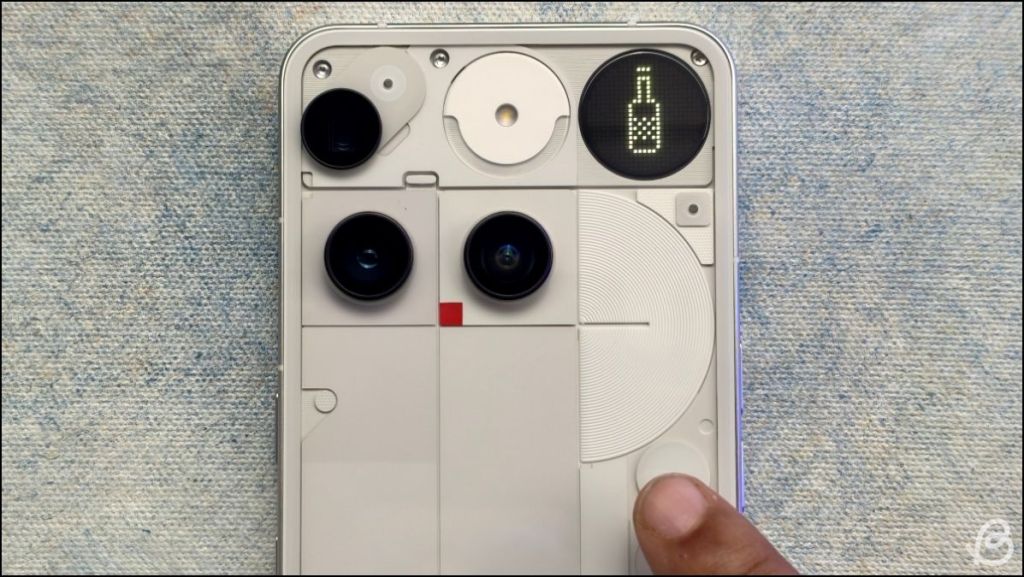
For me, the Glyph Matrix in the Phone (3) just turned into a glowing circle, which I rarely cared for, except for that one time, when I used the Glyph toys to entertain a toddler in the metro. I can see the company was trying to reinvent the Glyph wheel, but it just feels like another gimmick at best. It’s neat in theory. In practice? Not so much.
Nothing Phone (3) Display & Battery: A Treat to Eyes, But Not for Battery
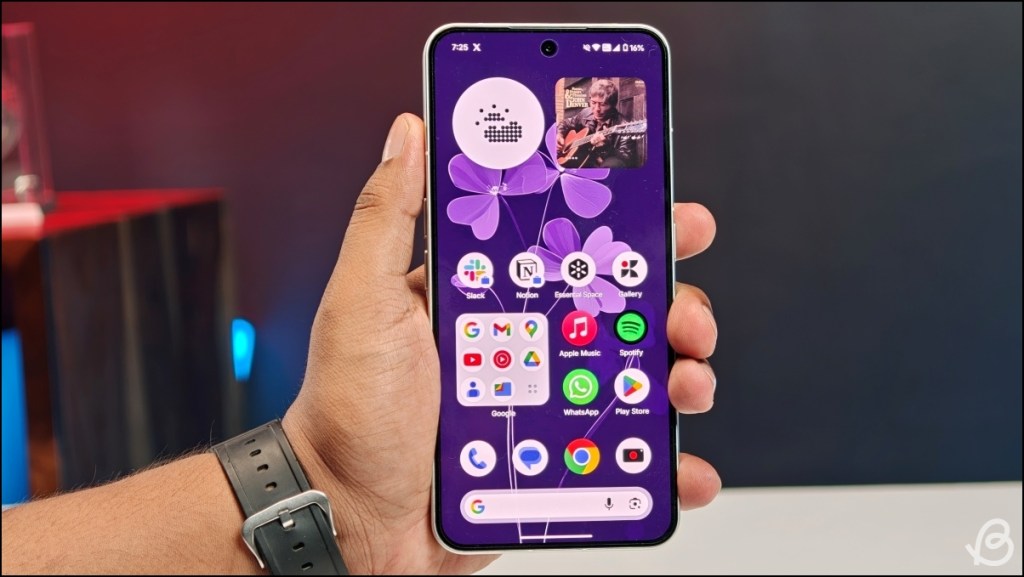
Now here’s where things get better. The Nothing Phone (3) comes with a 6.67-inch OLED panel with a 1.5K resolution, 120Hz refresh rate, and 4,500 nits of peak brightness. This is a good screen that Nothing has gone with, and the display experience has genuinely been solid. But it is worth noting that this is an LTPS panel and not LTPO, which hurts the battery life (more on that later).
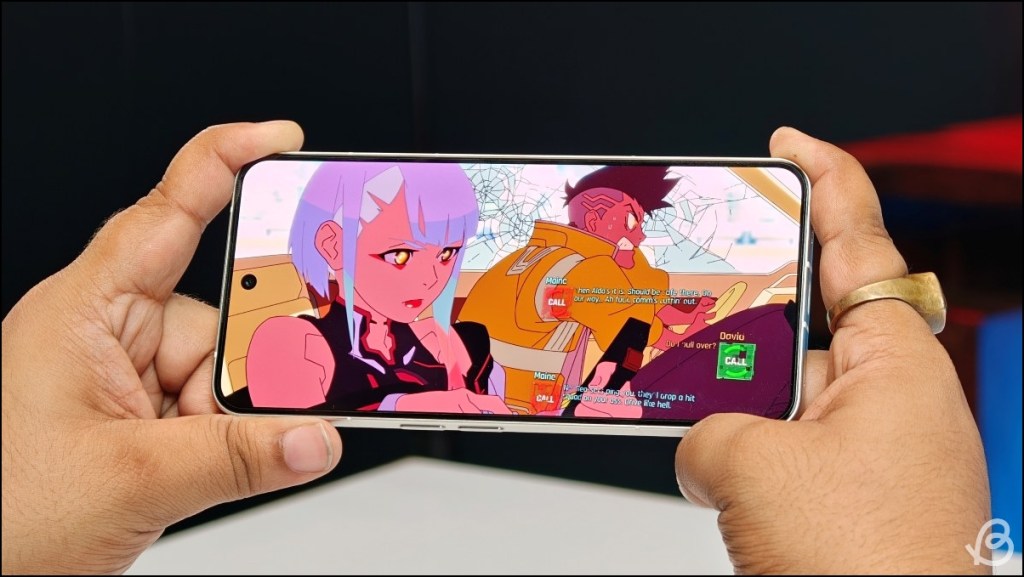
I watched Cyberpunk: Edgerunners on the Nothing Phone (3) whenever I took a break from work, and it was a treat. Amidst the chaos of shifting, I also accidentally dropped the device on a couple of occasions, but the Gorilla Glass 7i protecting the front glass ensured that it came out unscathed.
The speakers are also genuinely good, as I jammed multiple tracks on it throughout my metro ride, navigating the hustle and bustle of Delhi. The stereo setup gets loud and clear with a decent depth to it.
Now let’s discuss the battery. The Indian unit comes with a larger 5,500 mAh silicon carbon cell, compared to the 5,150 mAh capacity in the US. The bigger number should translate to better battery life, but no matter how I used it, whether it was for gaming, messaging, or just using the phone for work and calls, the Phone (3) struggled to cross the 5-hour screen-on-time mark. I’ve reviewed other devices with similar battery capacity, and they have all managed to last much longer.
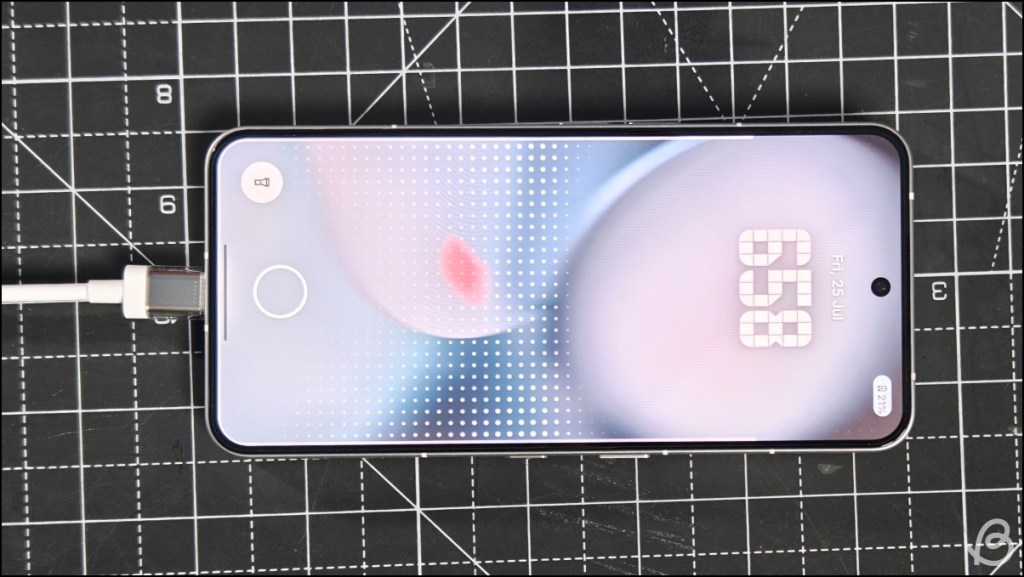
It’s disappointing. I even turned off the Glyph Matrix and got a replacement unit from Nothing’s India team (thanks for the support), thinking Beebom’s unit was faulty. But the replacement fared no better. At least the charging is fast at 65W, which takes it from 0 to 100 in under an hour, and it also has 15W wireless charging.
Nothing Phone (3) Performance: Solid But Not Spectacular
While most Android flagships this year are flexing the Snapdragon 8 Elite, Nothing has gone with the midrange Snapdragon 8s Gen 4. The chip is paired with either 12GB or 16GB of LPDDR5X RAM and UFS 4.0 storage, going up to 512GB. Don’t get me wrong, this is still a solid CPU, and here are the benchmark results to prove it.
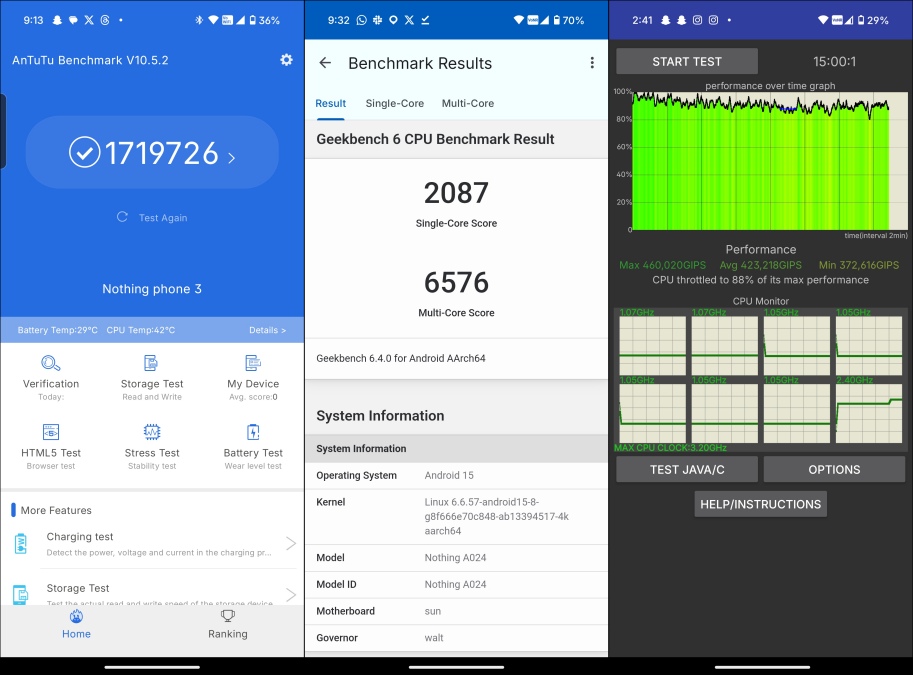
The thing is that it is just not on the same level as the rest of the $899 flagship phone club. In day-to-day use, the phone doesn’t struggle. Even in gaming, the Phone (3) holds its own pretty well. I got a stable 120FPS on low settings in Call of Duty: Mobile. Meanwhile, Genshin Impact, a demanding title, ran at 60FPS on high settings without any hitches.
But after about an hour of gaming, the device starts to warm up quite a bit. It wasn’t burning hot, but enough for me to put the phone down for a while.
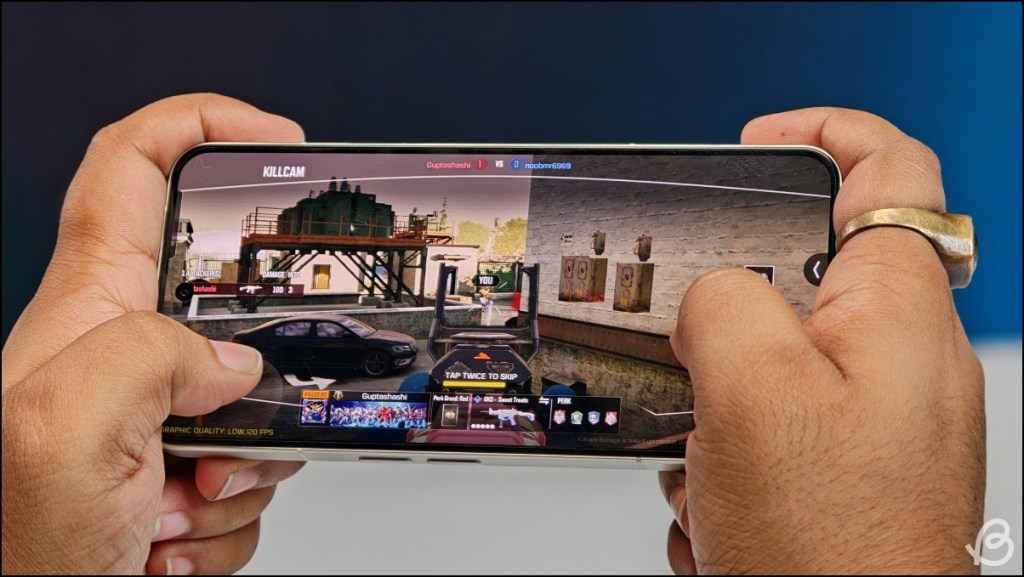
After reviewing other Nothing phones in the past, I have grown a liking towards Nothing’s own take on Android. The experience only grows sweeter with the Nothing OS 3.5 update based on Android 15, which comes with the Phone (3).
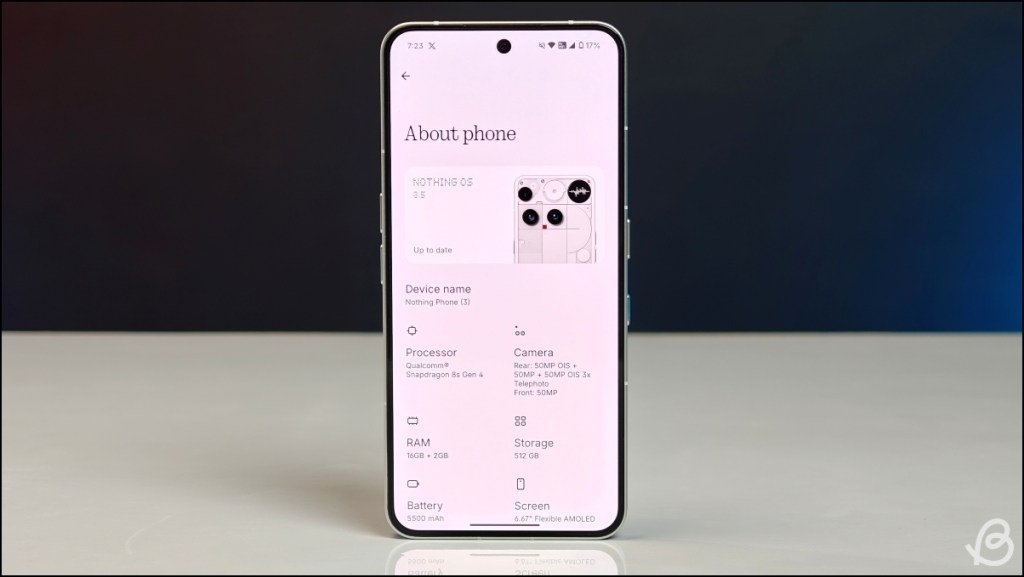
The monochrome aesthetic looks as charming as the first time I saw it. The company is promising 5 years of Android updates and 7 years of security patches. So, Nothing’s Phone (3) stands toe to toe with its other competitors, at least in the software department.
The brand has also adapted to the AI craze of 2025, featuring new AI additions to their Essential Space. You can now flip the phone to record audio, or use the new Essential Search to pull up apps, contacts, files, and more in one place. I have already reviewed Essential Space before, and it still feels like an extra, but not something that is “essential”.
Nothing Phone (3) Camera: Mind Your Expectations
The Nothing Phone (3) comes with 50MP sensors across the board: main, ultrawide, telephoto, and even the selfie camera. All of them support up to 4K 60FPS video recording. Thankfully, the timing of this review worked out well. I was traveling through the hills of North Bengal and got to test the camera against the stunning backdrop of the Kangchenjunga mountains and Mirik Lake.
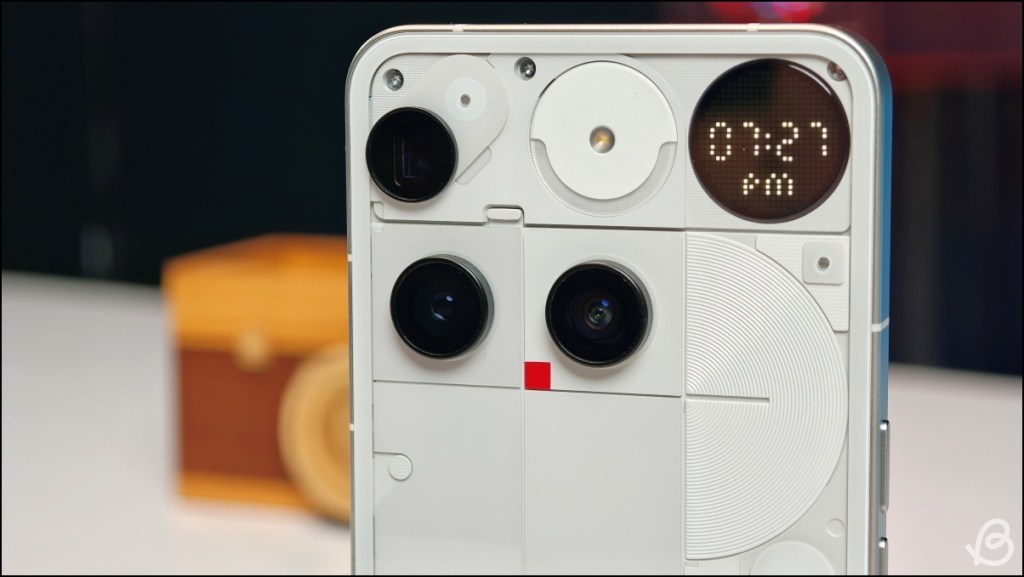
In bright daylight, the main 50MP sensor does a solid job. The photos carry sharp detail, and the dynamic range is mostly well-managed, though the exposure sometimes can get messy, especially in nighttime photos. As you can see in the shots of tea gardens, winding hill roads, and the resort I stayed at turned out really well, with plenty of texture, detailed shadows, and a pleasant color tone.
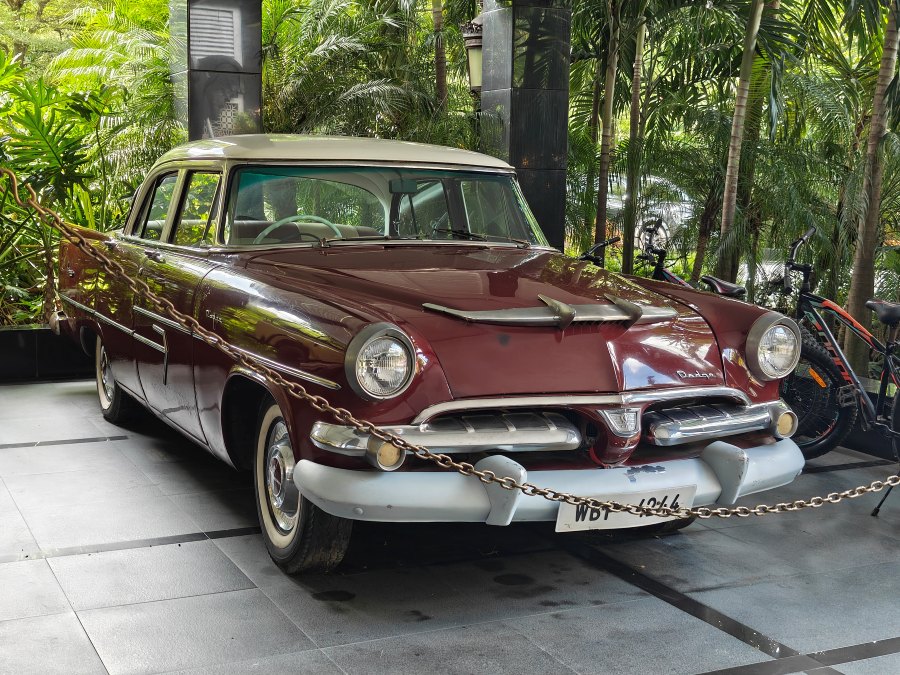
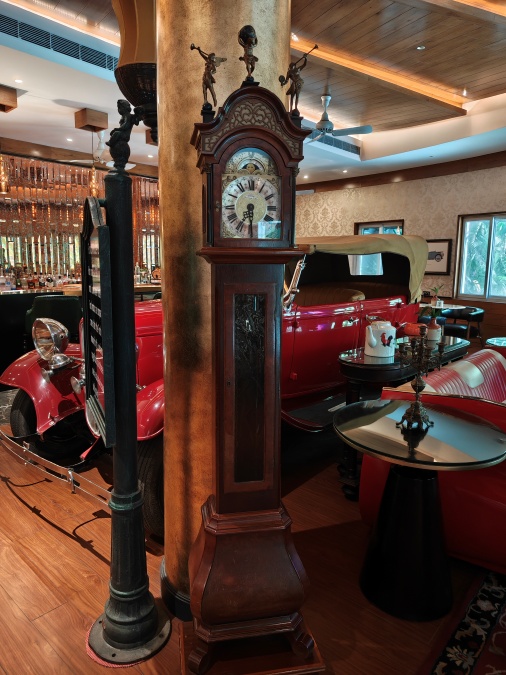


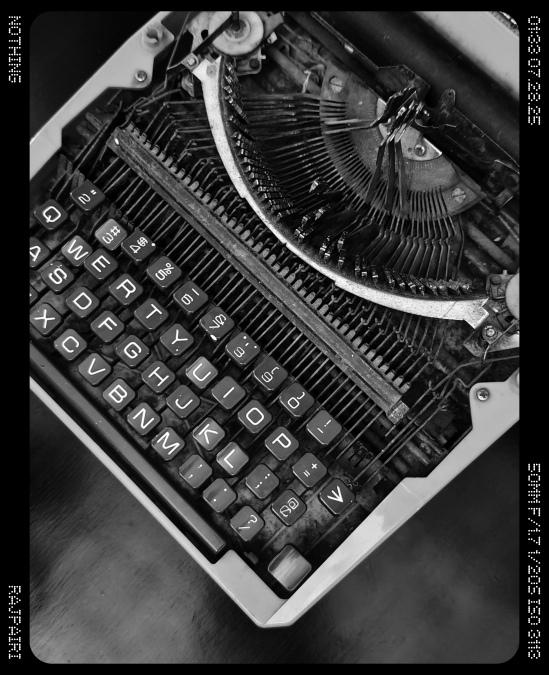
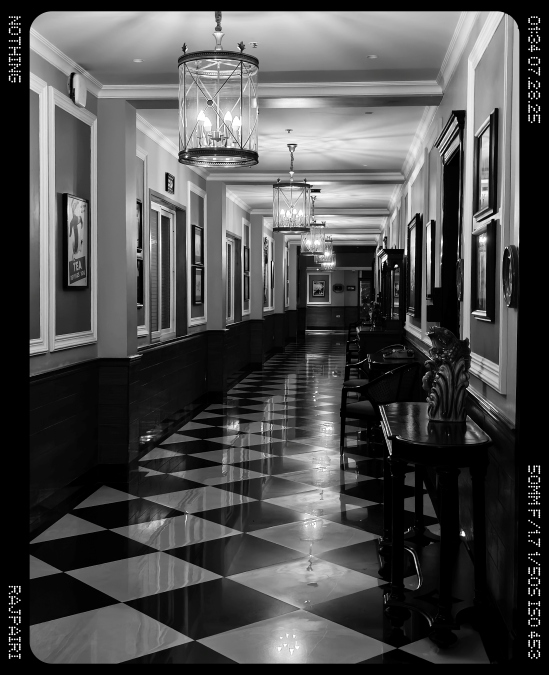
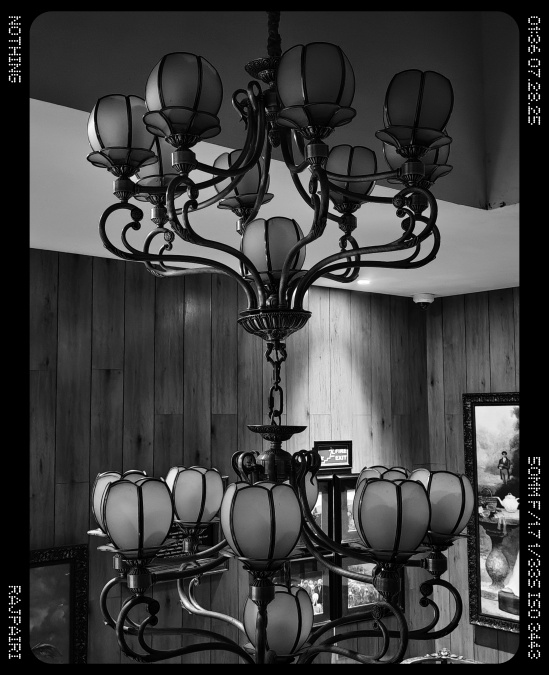
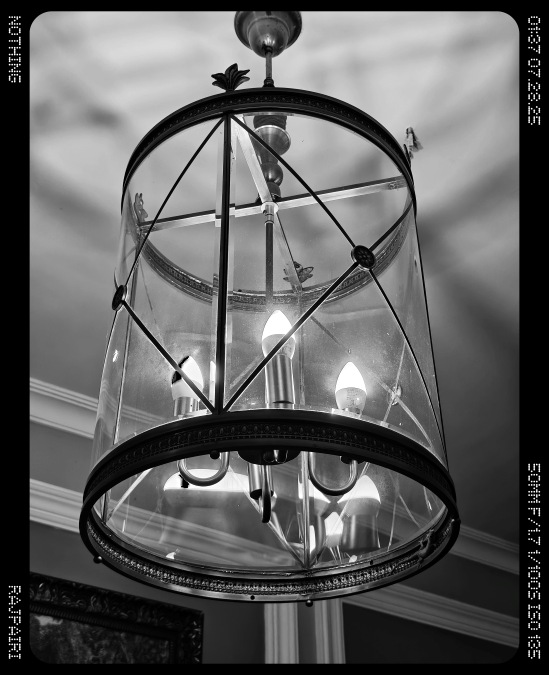




The ultrawide lens also performs decently, capturing the vastness of the landscape with minimal distortions. However, it doesn’t support autofocus, and the colors look a bit pale, which makes some shots look slightly dull and flat.






That said, the real highlight was the 3x periscope lens. It produced some truly beautiful shots of the bridge in Mirik and surrounding landscapes, with a natural bokeh effect that made subjects pop without looking artificial. But that stays true till 10x.
Anything beyond that, and the details begin to fall apart, with soft, hazy, and largely unusable results. Oddly enough, Nothing’s Cheaper Phone (3a) Pro features a better periscope lens that delivers cleaner, sharper zoom shots at longer ranges.

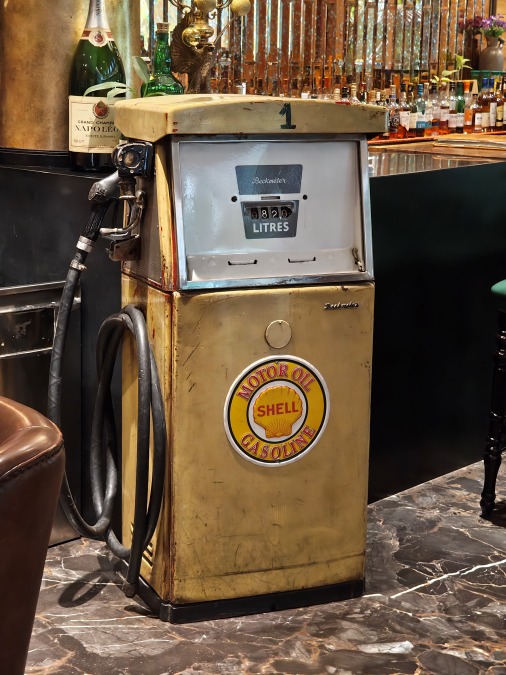

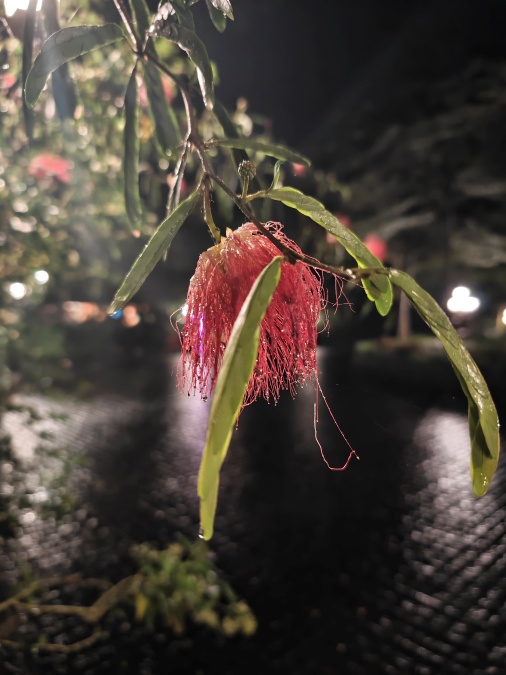








Another thing to note is the color inconsistency across the three rear lenses. Nothing has tried to iron this out with the recent update, but there’s still a noticeable difference between shots. Finally, the selfie camera is capable. It delivers crisp shots in daylight, and skin tones look natural. But in low light, the exposure handling isn’t great. So, night selfies are a hit or a miss.






Nothing Phone (3) Verdict: Carl Pei’s Lobster Didn’t Satisfy My Hunger
In my time spent with the Nothing Phone (3) for this review, I have come to realise one thing. That is, the company has its heart in the right place, but went too ambitious with the price. A flagship phone at $899 is supposed to offer a complete and polished experience with minimal compromises. Plus, is it supposed to stand out in at least one key area?

That isn’t at all the case with this phone. It has an odd device that is subject to your preference. A processor that isn’t top of the line, a battery that doesn’t last long, and a camera setup that faces its own set of issues. Yes, the software experience of NothingOS is good, but it won’t top One UI in the Galaxy S25 anytime soon. But all of the issues I mentioned wouldn’t sound that bad had this phone been priced more aggressively. Heck, even I would root for this underdog of a smartphone.
Nothing’s CEO Carl Pei has been making rounds on social media calling the Phone (3) a lobster. An analogy taken from popular YouTuber MKBHD’s review of the same device. But here’s the thing, at $899, this device feels like an undercooked lobster, and quite frankly, one I wouldn’t want to Pei for.
If you want something that looks different and don’t mind the compromises, this might still appeal to you. But if you’re after a true flagship experience right out of the box, then this isn’t quite it.






